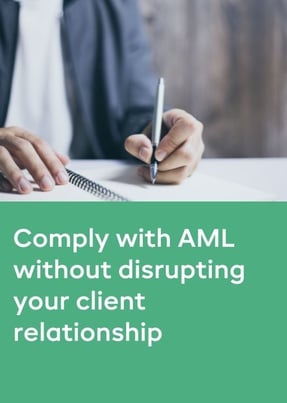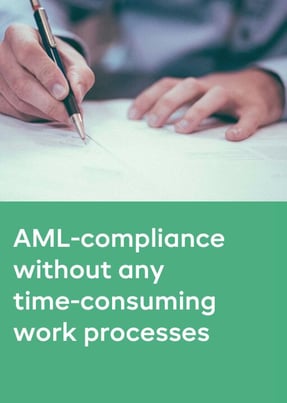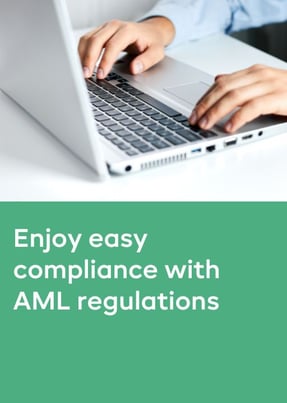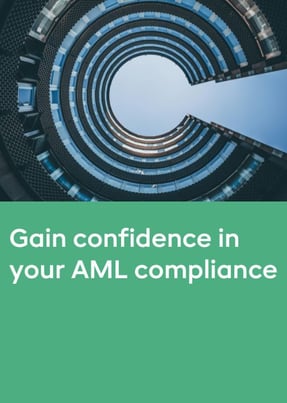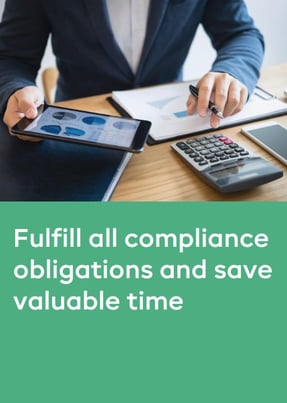- Products
- RegLab for ...
- Knowledge centre
Download the AML glossary >
 Discover the essential AML compliance terminology and gain instant access to a comprehensive guide
Discover the essential AML compliance terminology and gain instant access to a comprehensive guide - The company
Working at RegLab >
Join RegLab as the new Product Owner of our software tool and change the way the legal community approaches anti-money laundering.
There may not be any vacancies that perfectly match your profile, but that does not mean there is no room for someone who can improve RegLab.
- Book a demo
How did you design the compliance officer position?
Question no. 6 from the supervisor
The role of the compliance officer has grown significantly in recent years, largely due to the Anti-Money Laundering Act, which obliges larger firms to appoint one. Smaller firms may also be subject to this requirement, depending on the risk level of their clients and matters. This article explains when a compliance officer is mandatory, how to implement the role effectively, and the benefits it can bring to your firm.
When is a compliance officer mandatory?
The requirement to appoint a compliance officer varies by sector and depends on the size and nature of the organisation. Below is a breakdown by profession:
1. Law firms
- More than 50 lawyers annually: appointment of a compliance officer is always mandatory
- Between 10 and 50 lawyers: mandatory if at least 50% of matters annually involve AML-obligated services
- Fewer than 10 lawyers: no separate compliance officer required; each lawyer is individually responsible for AML compliance
2. Tax advisers, civil-law notaries, and accountants
- More than 50 employees annually: appointment is mandatory
- Fewer than 50 employees: a compliance officer is still required if the firm’s risk policy shows that over 75% of clients or transactions are high-risk
- The obligation depends on the nature and scale of the institution, such as the number of clients, their risk profiles, and assets under management
- Important: The “nature and scale” of a practice includes multiple factors. Not only headcount but also the number of clients, high-risk clients, and assets managed. If your client base includes a high proportion of high-risk individuals or entities, you are likely required to appoint a compliance officer.
External compliance officer: a possible alternative
The compliance officer does not have to be employed internally. The role can be outsourced to an external specialist, provided that the person is sufficiently independent, can guarantee quality, and aligns with the firm's AML policy.
How to implement the compliance officer role effectively
Identifying whether your matters fall under AML is one thing, properly structuring the role is another. A good compliance officer does more than just perform checks; they actively contribute to firm-wide awareness and enforcement of AML obligations. Here are four essential steps to align with the expectations of the supervisory authority:
1. Define the role and responsibilitiesCarefully consider the compliance officer’s position within the organisation:
- What are their specific tasks?
- When should matters be escalated?
- What is reported, and to whom?
- What does the full advisory process look like?
You should be able to answer these questions. When setting up the function, it can help to consult with peer firms or seek guidance from experts such as RegLab.
2. Include the role in your AML policy
Once the scope and structure of the role are clear, it should be formally documented in the firm’s AML policy. Be sure to include the name of the appointed compliance officer. Still working on your AML policy? Take a look at our checklist and guidance on drafting an effective AML office policy.
3. Ensure support and mandate from management
A compliance officer must be able to act independently, raise awareness, and challenge colleagues when necessary. This requires support and backing from firm leadership. Only then can they:
- Hold staff accountable for AML compliance
- Identify risks and take action
- Create a culture of awareness across the firm
4. Invest in the right tools
Equip your compliance officer with reliable software and systems. Good tools lead to more efficient workflows and allow data-driven insights, rather than relying solely on individual matter reviews.
Florent's Experience
We asked Klaske Glebbeek, knowledge manager at the law firm Florent, about her experience in filling the position of compliance officer.
“Meeting AML requirements revolves around various aspects. First of all, you need a policy, but that policy must also be implemented. AML software facilitates our lawyers to follow up the AML process. Ultimately, however, it is the lawyers themselves who must weigh up the risk profile. On the one hand, this requires awareness in the form of training, but also in the form of continuous monitoring and adjustment. This is exactly where the compliance officer helps us – in our case an external compliance officer from RegLab.”
The compliance officer checks matters and discusses any ambiguities and gaps with the employees involved at Florent. He is also the person to go to if files turn out to involve an increased risk. Klaske comments with a satisfied smile: “We recently had an audit from the Dutch Bar Association (NOvA), which also included AML, and we passed with flying colours, partly thanks to the software and the compliance officer.”
What are the benefits of having a compliance officer?
Although the appointment of a compliance officer may feel like a legal obligation, it offers many advantages:
- A professional appearance toward regulators, clients, and partners
- Improved insight into and control over the AML process and client risk profiles
- Stronger enforcement of the four-eyes principle
- Meeting insurance and external audit requirements
- Reduced administrative burden on lawyers and staff
- Up-to-date risk policies that align with current regulations
- Ongoing knowledge sharing and awareness on compliance topics
Themed file: fully prepared for the supervisor’s audit
This article is part of a number of articles and downloads that will help you prepare yourself for the supervisor’s visit. This content is based on a supervisor's FAQs during an audit. Do you want to be 100% AML-proof and ready for the supervisor’s visit? Find all FAQs in our Knowledge Centre.
